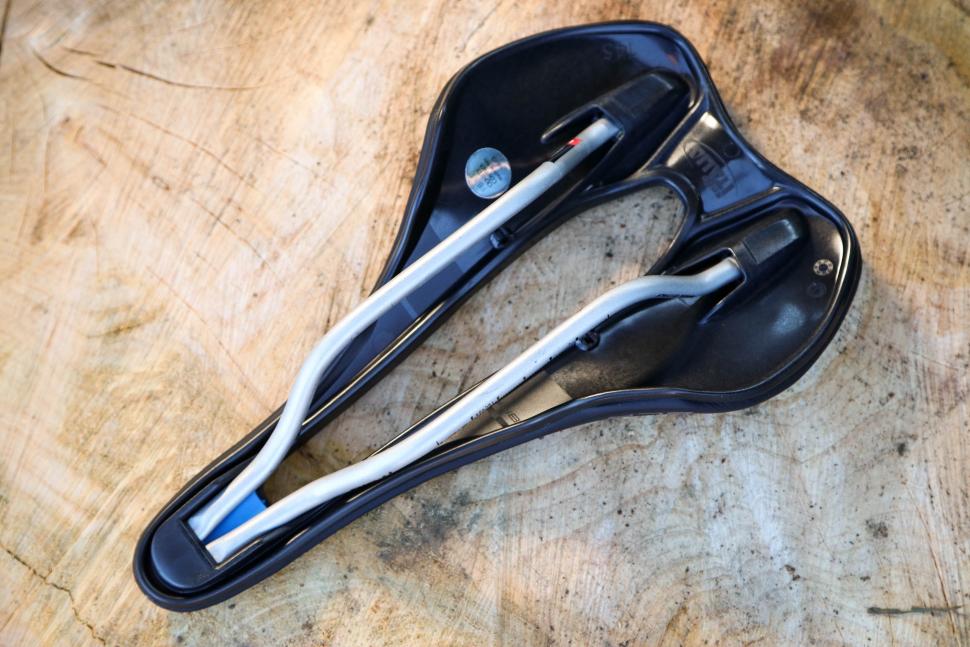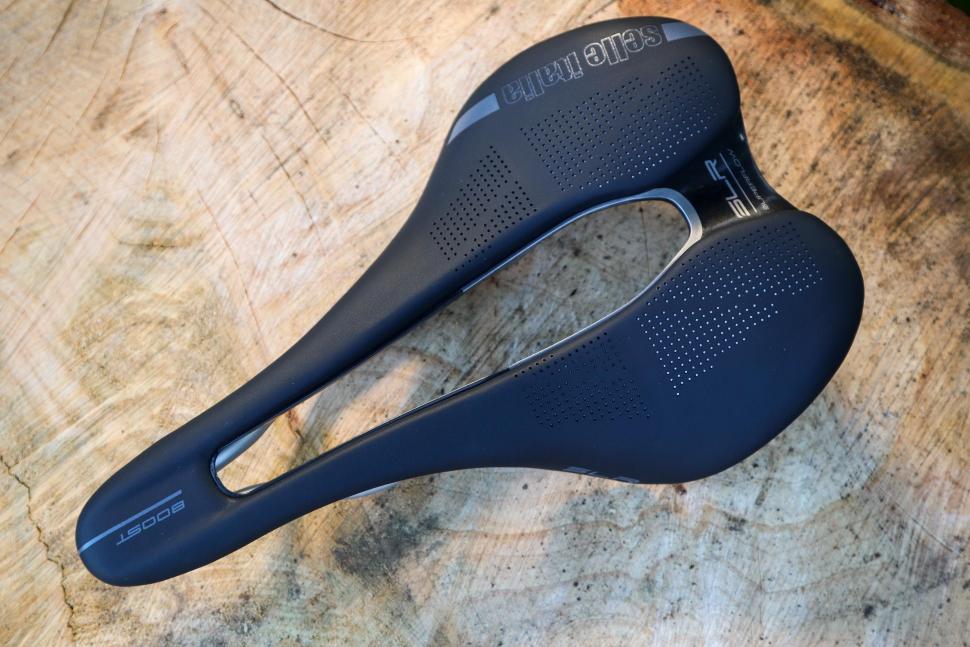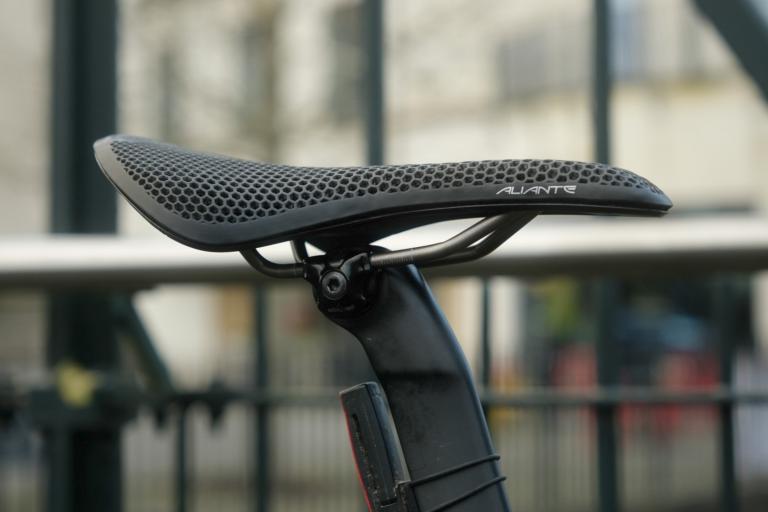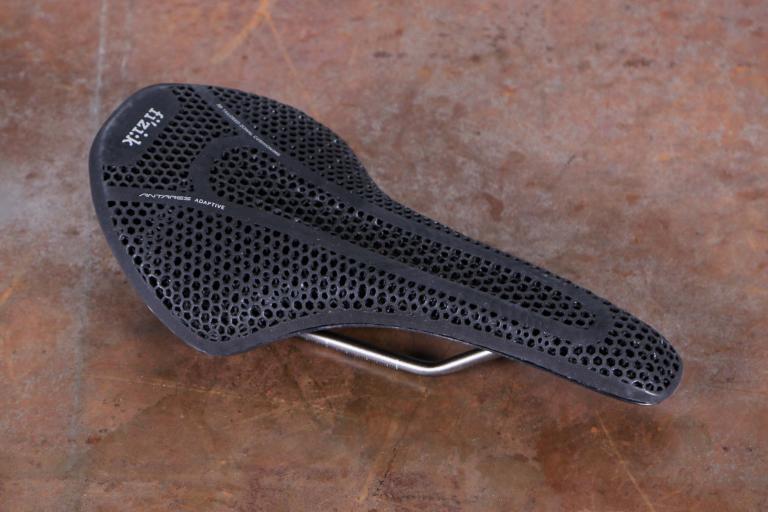- News
- Reviews
- Bikes
- Accessories
- Accessories - misc
- Computer mounts
- Bags
- Bar ends
- Bike bags & cases
- Bottle cages
- Bottles
- Cameras
- Car racks
- Child seats
- Computers
- Glasses
- GPS units
- Helmets
- Lights - front
- Lights - rear
- Lights - sets
- Locks
- Mirrors
- Mudguards
- Racks
- Pumps & CO2 inflators
- Puncture kits
- Reflectives
- Smart watches
- Stands and racks
- Trailers
- Clothing
- Components
- Bar tape & grips
- Bottom brackets
- Brake & gear cables
- Brake & STI levers
- Brake pads & spares
- Brakes
- Cassettes & freewheels
- Chains
- Chainsets & chainrings
- Derailleurs - front
- Derailleurs - rear
- Forks
- Gear levers & shifters
- Groupsets
- Handlebars & extensions
- Headsets
- Hubs
- Inner tubes
- Pedals
- Quick releases & skewers
- Saddles
- Seatposts
- Stems
- Wheels
- Tyres
- Health, fitness and nutrition
- Tools and workshop
- Miscellaneous
- Cross country mountain bikes
- Tubeless valves
- Buyers Guides
- Features
- Forum
- Recommends
- Podcast
review
£214.99
VERDICT:
Impressively light shorty saddle that shaves grams but also – for some – sacrifices a bit of overall comfort
Lightweight
Comfortable when on the drops
Sleek and minimal look
Great build quality
Harsher than regular version
Needs precise setup to be effective
Expensive
Weight:
166g
Contact:
At road.cc every product is thoroughly tested for as long as it takes to get a proper insight into how well it works. Our reviewers are experienced cyclists that we trust to be objective. While we strive to ensure that opinions expressed are backed up by facts, reviews are by their nature an informed opinion, not a definitive verdict. We don't intentionally try to break anything (except locks) but we do try to look for weak points in any design. The overall score is not just an average of the other scores: it reflects both a product's function and value – with value determined by how a product compares with items of similar spec, quality, and price.
What the road.cc scores meanGood scores are more common than bad, because fortunately good products are more common than bad.
- Exceptional
- Excellent
- Very Good
- Good
- Quite good
- Average
- Not so good
- Poor
- Bad
- Appalling
The Selle Italia SLR Boost TI316 Superflow is a short-nosed, very light saddle that's designed to take the pressure off your soft tissues when you're in an aggressive position and to shave a few grams off the weight of its longer-nosed cousin. It does both of these, but at the cost – for me at least – of some all-round comfort. There's also reduced margin for error in its setup because of its small size, and it's also very expensive for a steel-railed saddle.
I was riding a regular SLR Superflow on one of my road bikes – which had been set up by bike fitter Giuseppe Giannecchini at Racer Rosa and was also the L3 145mm wider version – so was able to compare them directly. The Boost version of the SLR Superflow is 27mm shorter at 248mm and has essentially the same geometry rear of the nose and the same stainless steel TI316 rails (note, TI316 isn't titanium, but titanium-stabilised steel) – but I found that taking the nose away also took away an element of comfort.
> Buy Now: Selle Italia SLR Boost Superflow saddle from Merlin Cycles for £169
> Find your nearest dealer here
The theory with short saddles is that all the pressure is borne by the ischial tuberosities, your sit bones, taking the pressure off the perineal soft tissues for both men and for women. Perhaps I am more of a fidgeter than I realised – and at this point it's useful to emphasise that saddle choice is always highly personal – but with the more static position that the SLR Boost Superflow encourages, because of its smaller size, I did suffer some sit bone ache that I don't experience with the regular SLR Superflow.
I was able to set up the SLR Boost Superflow very accurately because even though you can't measure from the tip to the centre of the bar any more, the rails are exactly the same as the regular SLR Superflow's, so I simply clamped them in the same place. Stack height is also the same. However, it wasn't so straightforward swapping it with a saddle that had different-length rails and geometry – more about that later.
With such a dramatic cutout – which works very well for a high pelvic rotator with an inflexible lower back like me – a bit of flex is welcome, and the regular SLR Superflow supplies enough. But the Boost saddle feels less compliant because of its shorter length, the padding is slightly thinner and the edges of the cutout harder. I needed to shift around on the limited space there was, and sometimes get out of the saddle to ease the ache – which somewhat defeats the object of the Boost, which is designed to enable its rider to hold an aggressive position pain-free for longer.
For low, aggressive road bike positions the shorter nose does allow the pelvis to rotate further without the rider sitting on the perineum, so if it does suit your sit bones and riding style I am satisfied it will indeed offer the claimed benefits.
Unlike other stubby saddles, such as the PRO Stealth or the Specialized Power, the SLR Boost does not have a wider nose than a regular saddle, nor does it have a split or central channel – though there is a slight central indentation. It's exactly the same width at the tip as the regular SLR Superflow's nose.
When I fitted it to my TT bike, it felt no different from a regular saddle: I found myself sitting on a narrow-feeling nose and, unlike with the road bike, it took a lot of trial and error to get it halfway comfortable. Normally I use an ISM PN 3.1 for time trialling, which supports the undercarriage via two slightly alarming-looking prongs rather than a single central nose, allowing me to sit right on the space where the rivet would otherwise be in total comfort. Selle Italia does, in its defence, have in its range time trial and triathlon-specific saddles such as the Iron Evo Superflow that work in the same way as the ISM.
While it may seem as though I'm struggling to see the point of the short-nosed SLR Boost (if you'll forgive the pun), Giannecchini the bike fitter loves short-nosed saddles, asserting that they fit the majority of men and women perfectly and that they are real problem-solvers for both novices and riders who struggle to find the right model. Proof, if any more were needed, that saddle choice is a very personal thing.
> Buyer’s Guide: 8 of the best short saddles
What can't be disputed is that the Selle Italia SLR Boost Superflow is a beautifully made, high quality, very light premium saddle with a very high price tag. The Fizik Vento Argo R1 is £184.99 and has carbon rails (though it's 20g heavier) and the Specialized Power Expert is now priced at £120 and comes with titanium rails, although with a 233g claimed weight (235g on the road.cc scales) is heavier than the Fizik and considerably heavier than the SLR Boost Superflow.
In summary, the Selle Italia SLR Boost Superflow is a beautiful saddle and very light, but it's got to be really comfortable to justify its high price. I found it on the hard side compared to the traditional SLR Superflow, which has a lower price of £189.99.
> Buy Now: Selle Italia SLR Boost Superflow saddle from Merlin Cycles for £169
Verdict
Impressively light shorty saddle that shaves grams but also – for some – sacrifices a bit of overall comfort
road.cc test report
Make and model: Selle Italia SLR Boost Superflow TI316 saddle
Size tested: L3
Tell us what the product is for and who it's aimed at. What do the manufacturers say about it? How does that compare to your own feelings about it?
Selle Italia says: "The SLR Boost improves and renews the values of a great classic like the SLR. The perfect combination of comfort and performance, which has always distinguished this model, is further underlined by a compact shape and an unprecedented lightness. The SLR Boost, in addition to the traditional Superflow, has an even more accentuated front exhaust that allows you to further increase the comfort during the thrust and to make the most of the characteristics of the saddle."
I found that comfort during the "thrust" was improved, but the traditional Superflow is more all-round comfortable for me.
Tell us some more about the technical aspects of the product?
This is Selle Italia's data sheet:
(Claimed) weight: 162 g
Rail: TI 316 Tube Ø7 mm
Dimensions: 145x248 mm
Category: Performance
Rate the product for quality of construction:
10/10
High-quality build, great workmanship.
Rate the product for performance:
8/10
If it fits your sit bones and riding style, it will do what it claims to do.
Rate the product for durability:
9/10
Durable Fibra-Tek cover looks as good as new at the end of the test period.
Rate the product for weight (if applicable)
10/10
Incredible weight for a steel-railed saddle.
Rate the product for comfort (if applicable)
5/10
For me, the traditional Superflow works better, but saddle choice is of course personal.
Rate the product for value:
5/10
Very expensive for a steel-railed saddle.
Tell us how the product performed overall when used for its designed purpose
I personally prefer the traditional SLR Superflow for general comfort, but for the low, aggressive position that short-nosed saddles are designed to enable, it performed very well.
Tell us what you particularly liked about the product
Very light, lovely looking, the large cutout suits my higher pelvic rotation due to an inflexible back.
Tell us what you particularly disliked about the product
I found it harder than the traditional SLR Superflow and I found myself fidgeting to get comfortable.
How does the price compare to that of similar products in the market, including ones recently tested on road.cc?
It's pretty expensive. The Fizik Vento Argo is £184.99 and has carbon rails (though is 20g heavier). The Specialized Power Expert is now priced £120 and comes with titanium rails, although, with a 233g claimed weight, is heavier than the Fizik Vento Argo R1 and considerably heavier than the SLR Boost Superflow. The Cadex Boost is more expensive at £249 but is lighter at 141g and has carbon rails. The regular version of the Selle Italia SLR Superflow costs £189.99.
Did you enjoy using the product? It wasn't quite right for me personally.
Would you consider buying the product? No
Would you recommend the product to a friend? Yes, but it's crucial to try to get a test ride first before spending this much money.
Use this box to explain your overall score
It's great looking, very light and high quality, but the very high price brings the score down. If this was the most comfortable saddle you'd ever ridden it might be worth it; personally, even if it did improve my riding experience over the traditional SLR Superflow, I would still think very carefully before spending over £200.
About the tester
Age: 50
I usually ride: Racer Rosa custom alu My best bike is: Colnago Master Olympic
I've been riding for: Over 20 years I ride: Most days I would class myself as: Expert
I regularly do the following types of riding: time trialling, commuting, touring, club rides, sportives, School run on a tandem










"ruin the wax on a molecular level"...
I'm gonna guess something like "front wheel skids always throw you off but not rear wheel ones"......
Or NA11 VWH
How can that possibly not be a deliberate decision?...
SBS in Australia. They have the Tour, Vuelta, Giro, and a bunch of other races - all free and live. I think they do catch-up as well
Well you don't even know how to spell it…
Mine takes 38s but the clearance on the front derailleur is rather tight.
TNT can sit on my seatpost and swivel. Not giving a penny to the vile bean counters.
I agree. Off to sign.